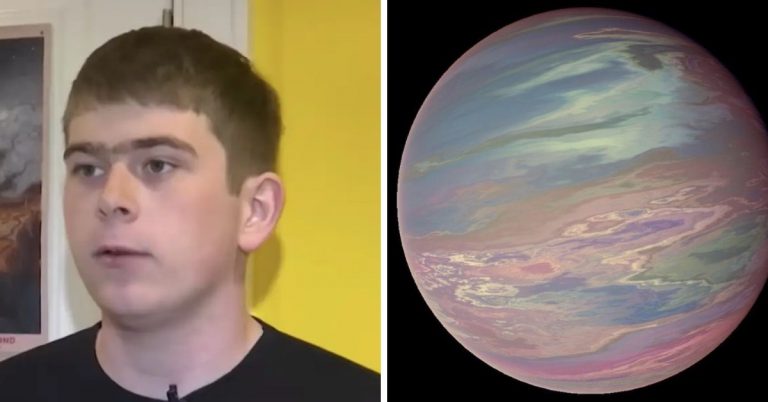Most people sit through countless orientations on the first few days of their jobs, but one teen discovered a planet — on his third day!
During his junior year at Scarsdale High School in New York, Wolf Cukier landed a two-month internship with NASA. So during the summer of 2019, he traveled down to NASA’s Goddard Space Flight Center in Greenbelt, Maryland.
His first assignment was to examine variations in star brightness captured by NASA’s Transiting Exoplanet Survey Satellite, known as TESS, as a part of the Planet Hunters TESS citizen science project. (The citizen science project allows people who don’t work for NASA to help with finding new planets.)
And just three days into his internship, Cukier discovered a new planet.
NASA announced the news on their website in Jan 2020, after confirming Cukier’s work, submitting a paper that he co-authored for scientific review and announcing the discovery of the planet, now named “TOI 1338 b,”
“I was looking through the data for everything the volunteers had flagged as an eclipsing binary, a system where two stars circle around each other, and from our view eclipse each other every orbit,” 17-year-old Cukier tells NASA. “About three days into my internship, I saw a signal from a system called TOI 1338. At first, I thought it was a stellar eclipse, but the timing was wrong. It turned out to be a planet.” CNBC
“I noticed a dip, or a transit, from the TOI 1338 system, and that was the first signal of a planet,” Cukier explains to NBC 4 New York. “I first saw the initial dip and thought, ‘Oh that looked cool,’ but then when I looked at the full data from the telescope at that star, I and my mentor also noticed, three different dips in the system.”
The planet TOI 1338 b, is nearly seven times as large as Earth (in between the size of Neptune and Saturn) and has two stars — one that’s about 10 percent more massive than our sun and another only a third of the sun’s mass and less bright.

The orbit path of TOI 1338 b. (Photo: screenshot from NASA GODDARD)
TOI 1338 b is the first planet captured by the TESS system that is considered a circumbinary planet—meaning it orbits two stars.
Also Read: Take A Look At These Breathtaking Hi-Res Photos Of Jupiter Swirling In Space



